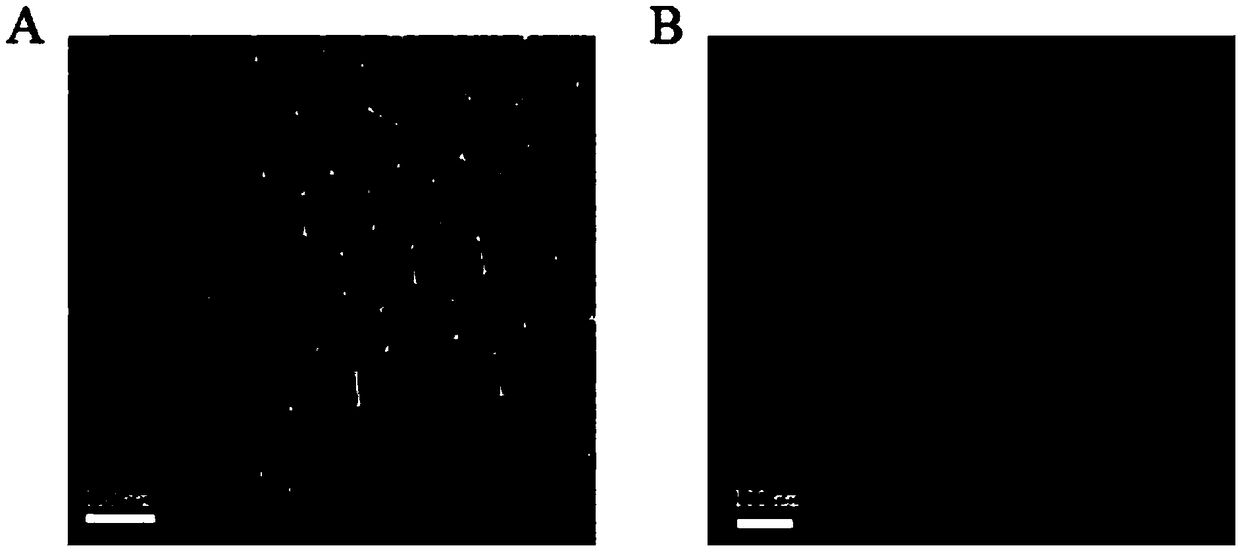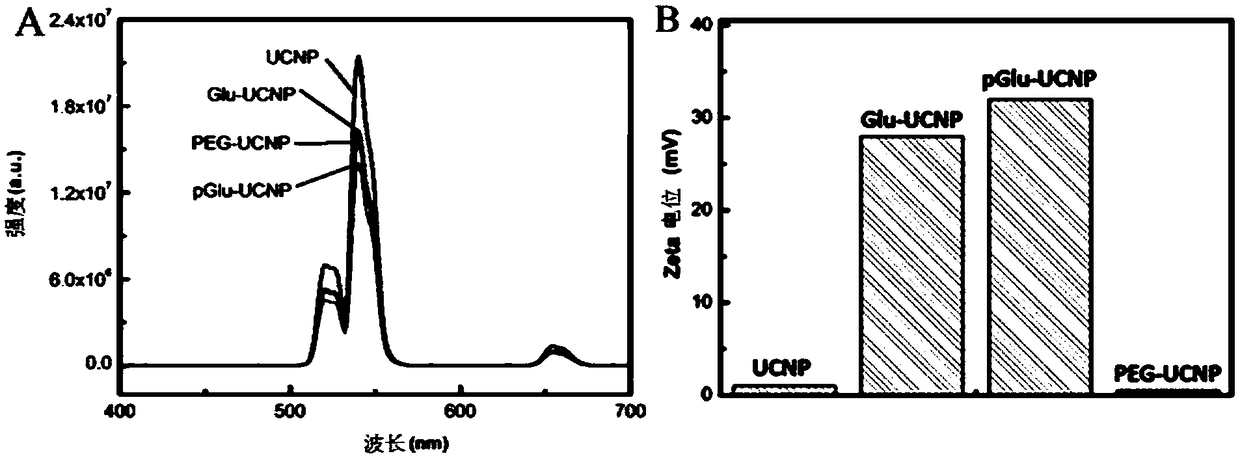Non-invasive near-infrared optically-controlled nano-material for repairing damaged nerves
A fluorescent nanomaterial and near-infrared light technology, which is applied in the field of non-invasive near-infrared light-controlled nanomaterials, can solve problems such as not being widely used, and achieve the advantages of avoiding side reactions, improving flexibility, and improving tissue penetration. Effect
- Summary
- Abstract
- Description
- Claims
- Application Information
AI Technical Summary
Problems solved by technology
Method used
Image
Examples
Embodiment 1
[0038] Example 1NaYF 4 :Yb 3+ ,Er 3+ Synthesis of nanoparticles
[0039] take Y 2 o 3 and CF 3 Put COOH in a round-bottomed flask with a molar ratio of 1:6, add 50mL of pure water, stir to dissolve and distribute evenly, heat up to 120°C, and condense and reflux for 2 hours from the generation of condensed water. After the reflux, the reaction solution was lowered to room temperature, and the insoluble impurities were filtered out with a Buchner funnel. After collecting and filtering, the clear solution was placed on a heating plate to dry most of the water, and then dried in a 140°C oven to form a powder.
[0040] In addition, according to the above method, using Yb 2 o 3 and Er 2 o 3 Replace Y in the above steps 2 o 3 , to synthesize Yb(CF 3 COO) 3 and Er(CF 3 COO) 3 .
[0041] Take Y(CF 3 COO) 3 (0.695mmol), Yb (CF 3 COO) 3 (0.030mmol), and Er(CF 3 COO) 3 (0.010mmol), (CF 3 COO)Na (4mmol) was placed in a 100mL three-necked flask, and 20mL oleic acid a...
Embodiment 2
[0042] The preparation of embodiment 2Glu-UCNP
[0043] The glutamic acid (Glu) modifier was modified onto the UCNPs prepared in Example 1 by the carboxyl substitution method. Dissolve 60mgGlu in 15mL of deionized water and stir for 30min to disperse evenly. Then at 45°C, 40 mg of UCNP prepared in Example 1 were slowly added dropwise, the solution changed from a clear solution to a milky white suspension, and the stirring was continued for 8 hours. After the reaction was completed, it was lowered to room temperature, and the reaction solution was left to stand for 1 hour, and then separated with a separatory funnel, and the lower layer of the aqueous phase was washed with ethanol and water at 14,800 rpm, and redispersed with pure water after washing three times to obtain glutinous rice Amino acid-modified UCNPs, hereinafter referred to as Glu-UCNP.
Embodiment 3
[0045] Polyglutamic acid-modified UCNPs (pGlu-UCNP) were prepared according to the method in Example 2, except that 60 mg Glu in Example 2 was replaced with 60 mg pGlu.
PUM
 Login to View More
Login to View More Abstract
Description
Claims
Application Information
 Login to View More
Login to View More - R&D
- Intellectual Property
- Life Sciences
- Materials
- Tech Scout
- Unparalleled Data Quality
- Higher Quality Content
- 60% Fewer Hallucinations
Browse by: Latest US Patents, China's latest patents, Technical Efficacy Thesaurus, Application Domain, Technology Topic, Popular Technical Reports.
© 2025 PatSnap. All rights reserved.Legal|Privacy policy|Modern Slavery Act Transparency Statement|Sitemap|About US| Contact US: help@patsnap.com



